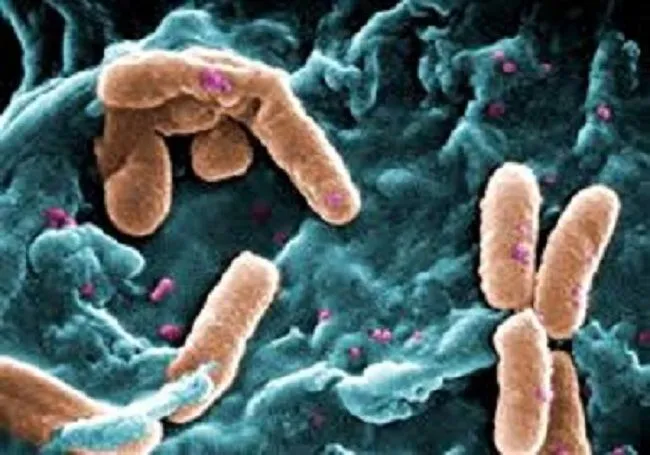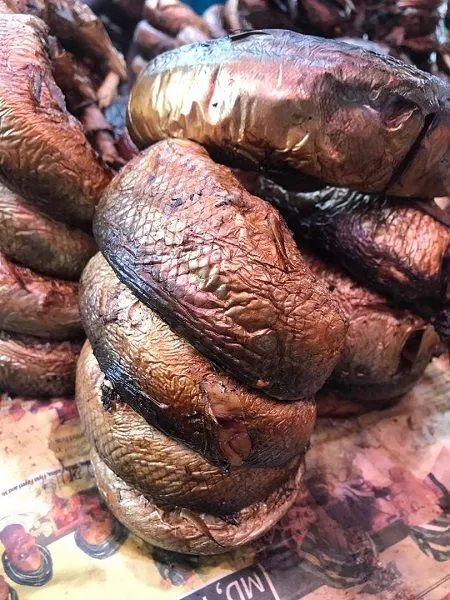Good day everyone, thank you very much for reading and commenting on my previous posts, today we will be talking about Bacillus cereus and Listeria monocytogenes, both are disease-causing organisms associated with the food we ingest regularly but they can be avoided. The aim of the post is to encourage us to improve our hygeine and attitude towards the things we consume and point out reasons why we should be serious with these organisms.
Bacillus cereus is a large Gram-negative, spore forming, pathogenic rod that is similar to Bacillus anthracis (the causative agent for the notorious anthrax disease) in many aspects except that the strains are non-encapsulated and motile. The formation of spores enhances the pathogenic ability of this organism because it enables it to withstand and remain inactive in harsh environmental conditions that will not support its replication such as heat, chemicals, drying etc; it becomes active when these conditions become favourable for its survival.
For proper laboratory analysis Bacillus cereus can be cultured easily using simple laboratory media, cannot ferment or utilize mannitol and can produce haemolysin when cultured on sheep or horse blood agar. Although Bacillus cereus has been confirmed as food-borne pathogen associated with reheated food (especially Rice, some other cereals and vegetables), it has been indicated as the causative agent for bacteraemia in an immunocompromised host.
 )
)There are two syndromes associated with Bacillus cereus infection that occurs when it's spore is deposited on food and ingested. When the spores are deposited on exposed food, the organism is able to survive the initial cooking and heating process, it is therefore important to note that if the contaminated food is not properly reheated before consumption, some strains are able to produce heat stable toxins in food (associated with spore germination) which could give rise to a syndrome that includes vomiting within four to six hours of ingestion of the food. However, the second syndrome associated with Bacillus cereus causes diarrhoea within ten to fifteen hours after the ingestion. The toxins produced at this time are heat labile enterotoxins similar to the enterotoxins of cholera.
The Good News
Majority of the illness associated with Bacillus cereus is usually short lived and self limiting and the use of antibiotics might not be necessary (this is not to say that we should expose cereals and vegetables that might be consumed without proper cooking). Let me bring it down to my locality: High risk individuals should avoid consuming Garri (cassava flakes) with exposed smoked fish brought from the market. Exposed vegetables and meat product should be thoroughly washed with clean water and if possible a little amount of NaCl (table salt) can be added to the water. However, individuals who are immunocomprised with suspected case of bacteraemia should visit a physician and be treated promptly.
Although Bacillus cereus and Listeria monocytogenes are both motile Gram positive rods, they differ in so many ways, unlike B.cereus, L. Monocytogenes has the faculty to be anaerobes although it can also survive in aerobic condition and it is unable to form spores.
Listeria monocytogenes can be transmitted through any of the following ways:
Vertical transmission (vaginally during child birth)
Transplacental infection of the foetus from an infected mother
The ingestion of contaminated milk (raw milk products) from cows or goats.

A unique character exhibited by L. Monocytogenes is that can be cultured or grown at 25OC and it can also grow at temperatures between 4 - 10OC. It is therefore important to keep the temperature of our refrigerators below 4OC in other to prevent this organism from surviving. L. Monocytogenes is capable of causing disease in three important group of people (The pregnant women, Foetus or neonates, and individuals with comprised immunity or the elderly).
How is Listeria monocytogenes able to cause disease?
Having said that Listeria monocytogenes is non spore forming unlike B.cereus (Please be reminded that the spore prevents the organism from harsh environmental conditions), L. monocytogenes is motile and capable of producing ListeriolysinO and Phospholipases (that allows it’s motility, invasion and colonization of its host). With these molecules produced L. monocytogenes is able to withstand phagocytosis (process of engulfing and destroying pathogens) and therefore avoid intracellular killings. Because of this ability and strength, it is able to cause three types of disease condition namely:
- Meningitis (In neonates, elderly and individuals that are immunocomprised )
Neonatal meningitis caused by L. monocytogenes can be acquired through the vaginal (from an asymptomatic mother to child) during delivery and the clinical manifestation is presented in most cases after two weeks of birth.
In people above 60 years of age and those with comprised immunity, this pathogen is able to colonize and survive in certain immune cells (like the macrophages) that are suppose to engulf and destroy pathogens making L. monocytogenes a common cause of meningitis in this group of individuals. individuals referred to as those with comprised immunity include people with underlying disease e.g Diabetes, HIV infection and other sick individual.
- Septicaemia in Pregnant women
Pregnant women are often advised to avoid soft cheese and coleslaw and other chilled products that their source and preparation cannot be verified as hygienic because this bacteria can be acquired from them especially in the last three months of pregnancy when cell mediated immune response is reduced, even where the incidence of meningitis is not commonly indicated in pregnant women, the individual should remember that there is an increased probability of suffering from bacteraemia or septicaemia, and the foetus stands a risk of infection that might result to abortion or premature birth.
- Listeriosis in the elderly, children and again individuals that are immunocomprised.
Listeriosis can be acquired through our mouth especially when individuals that are at risks eats food that is contaminated by the organism in question. Like I have said previously, Listeria can grow at 4OC where most other food pathogens cannot grow, therefore it can contaminate refrigerated meats and fish, raw fruits, unpasteurized milk, coleslaw, butter, dairy products and other food products that are refrigerated and eaten without reheating (ready to eat food).


Conclusion
Hygienic preparation of food is important if we must prevent the incidence and spread of these opposite directional pathogens (B. cereus can survive heating while L. monocytogenes can tolerate refrigerating), it also important to ensure that properly cooked food that cannot be consumed immediately is neatly packaged and stored in the refrigerator. Such food should be thoroughly reheated before serving, you may wish to read about improper cooling and heating here.
The refrigerator used for storage, the cooking utensils and the kitchen where meals (e.g. Coleslaw and other ready to eat foods) are prepared should be kept clean regularly. The refrigerator can also be shared into compartment that can helps to separate uncooked food items from the ready to eat fruits and vegetables.
Thank you for reading, expecting to read your comments.
Refences
If you write STEM (Science, Technology, Engineering, and Mathematics) related posts, consider joining #steemSTEM on discord here. You can also check this blog post by @steemstem here and this guidelines here for help on how to be a member of @steemstem. Please take a step futher to also check this blog post from @steemstem on proper use of images devoid of copyright issues here
